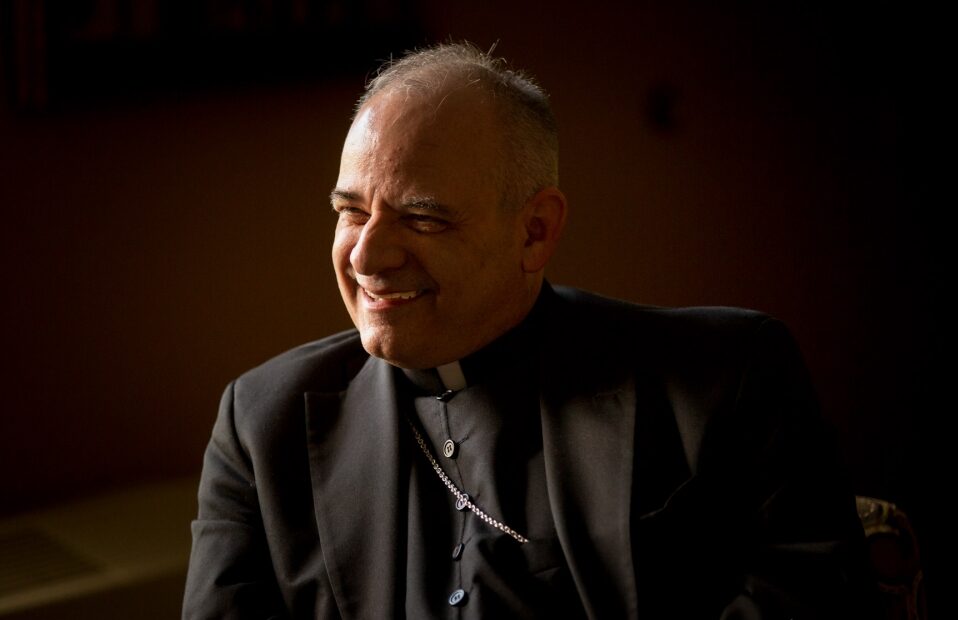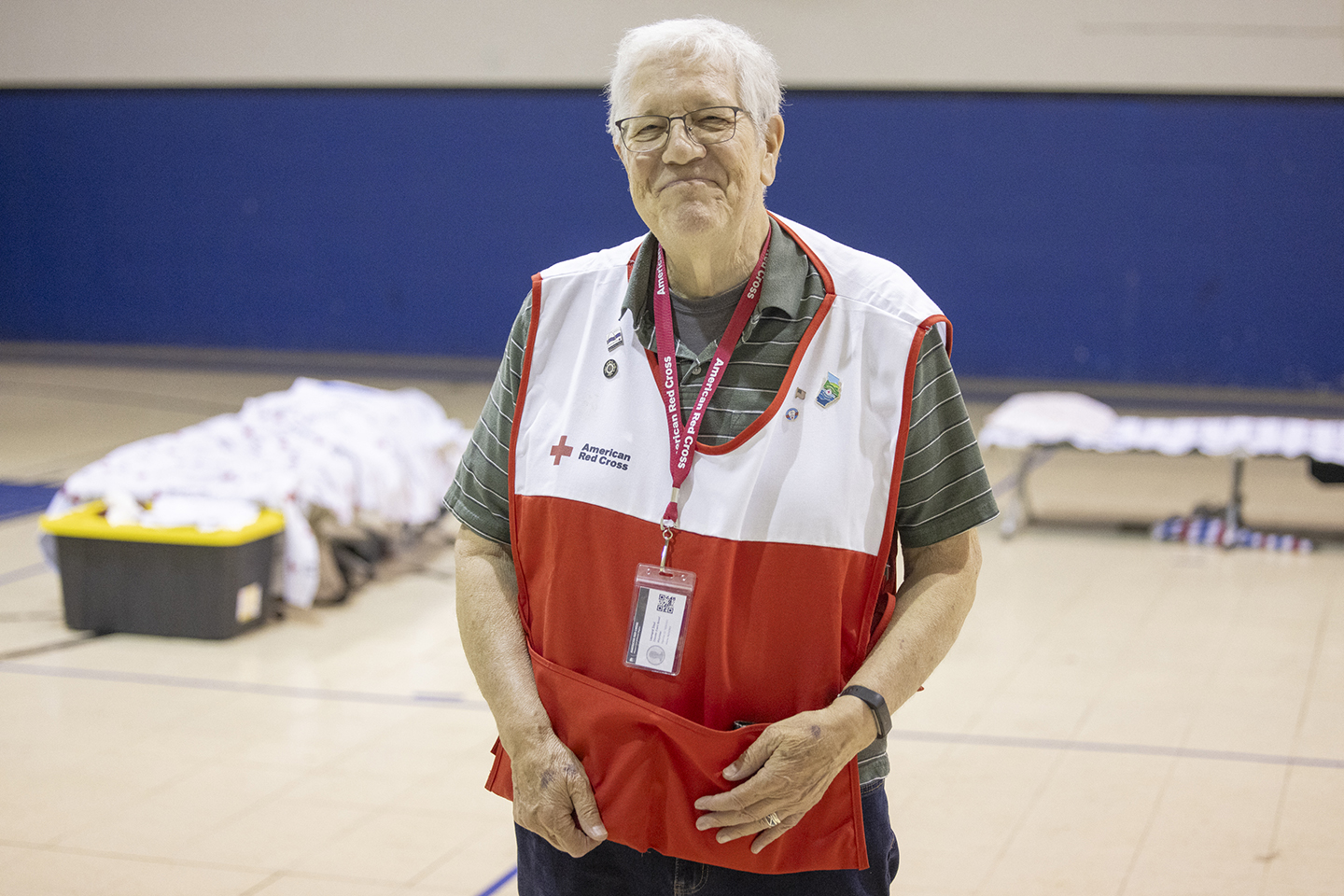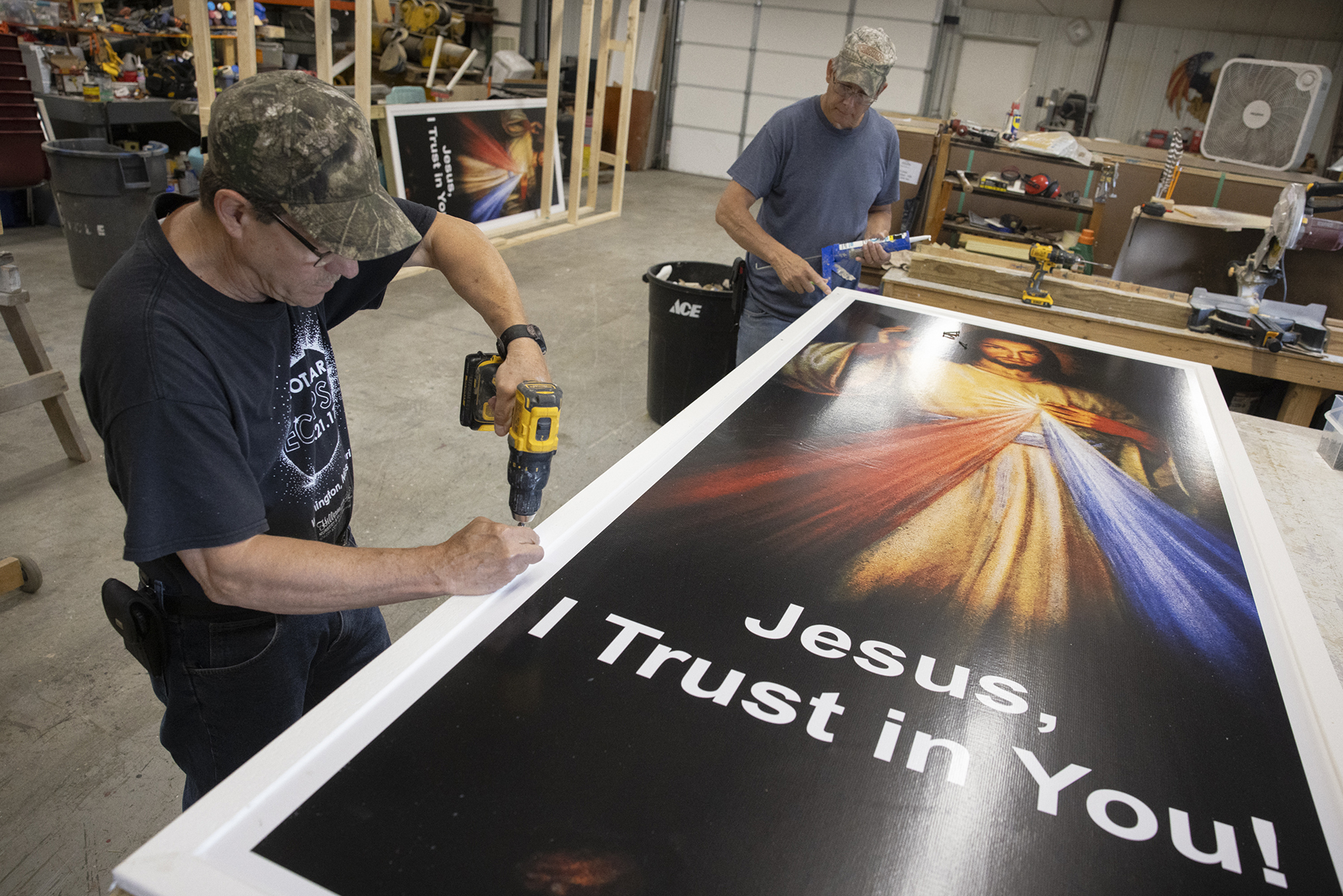A sacred space for hands-on learning about the faith

St. Gerard Majella students encounter God in peace and prayer through Catechesis of the Good Shepherd
On a Tuesday morning at St. Gerard Majella School in Kirkwood, Keira Hartwig carefully set up a child-sized altar. After laying down a white linen, she placed the crucifix at the front and arranged a candle on each side before adding the chalice and ciborium.
Across the room, a handful of her pre-K classmates gathered around Ann Eilermann as she told them the story of the Good Shepherd, moving a wooden Jesus and sheep around a tabletop pasture as she read.
The 4- and 5-year-olds were engaged in the work of the Catechesis of the Good Shepherd, a Montessori-inspired religious education program for children. Classes are held in an atrium, a room set up as a sacred space for the students to experience God’s presence and develop their faith.

“Everything is geared toward a loving encounter,” said Eilermann, coordinator of religious education at St. Gerard Majella School.
St. Gerard Majella is among several elementary schools and parishes in the Archdiocese of St. Louis offering Catechesis of the Good Shepherd, which is designed for ages 3-12 across three levels. Eilermann, who is also a catechist, helped start a Level I atrium at St. Gerard Majella 14 years ago, adding Levels II and III in the following years. Catechists undergo rigorous training to earn certification for each level, so a school or parish’s ability to offer different levels depends on the catechists available.
St. Gerard Majella students spend an hour in the atrium once a week, supplementing the daily religion curriculum. Catechesis of the Good Shepherd is also offered at the parish as a Parish School of Religion option and an after-school time for students of any parish.
Time in the atrium is student-led. Catechists offer a “presentation” on a Bible story or topic to half the group while the other students freely move about the space, interacting with materials such as liturgical objects, doll-sized priest vestments and maps and timelines for exploring salvation history.
Across the hall, catechist Lisa Vorwerk led fourth-graders in a discussion on virtues. A virtue is “the strength to do what is good,” Vorwerk said.
“God is calling us to heroic action. What does that look like, in your fourth-grade day-to-day life?” she asked, before leading them through the cardinal virtues of fortitude, prudence, justice and temperance. Other students read from their Catholic Youth Bibles or used wooden figures and buildings to recreate parables. In the Level III atrium, students also take turns planning and leading the closing prayers each week.
As children progress through the levels, the presentations build on each other “like a spiral,” Eilermann explained. For example, the pre-K students that morning learned about how Jesus is the Good Shepherd, and He knows His sheep and takes care of them.

“Probably by the age of 5, they’ll figure out, ‘I’m one of those sheep,’” Eilermann said. “And once they do, we have figures that trade out people for the sheep, and the people can gather around the altar.” Older children will contemplate how Jesus, the Good Shepherd, is still feeding us through the Eucharist, she added.
An important part of the atrium is the peace and stillness that allows the children to slow down and ponder the mysteries presented to them, Eilermann said. That’s helped the school community cultivate reverence outside the atrium, too, alongside a deeper love for the Mass.
“Our kids really know how to find quiet and stillness, which in this busy world is a hard thing to find,” Eilermann said. “We’ve also received observations from parishioners that at Mass and all-school adoration, they are reverent. Little by little, over the years, (Catechesis of the Good Shepherd) has shaped them and offered an encounter for them to just find peace and calm in their hearts.”
Chris Bickhaus is in training as a Level I catechist and assists in the atrium on Tuesday mornings. As the parent of a third-grader and first-grader at St. Gerard Majella School, he’s witnessed his own children’s experience in the atrium spill out into family and parish life, particularly at Mass, he said. They started using words like “epiclesis,” he recalled, which is the invocation of the Holy Spirit over the gifts of bread and wine during the Eucharistic Prayer.
Bickhaus and Eilermann have heard stories from other families about their children’s growing prayer habits. One mother told Eilermann that her young son responded to a hard time in his life by recreating the atrium’s prayer table at home.
“It was 6 o’clock in the morning, and he had a prayer table set up, and he was just finding his peace and working through whatever it was,” Eilermann said. “That’s what we want for our youth — for (the faith) to become their own, and their relationship with Jesus to be first and foremost.”







